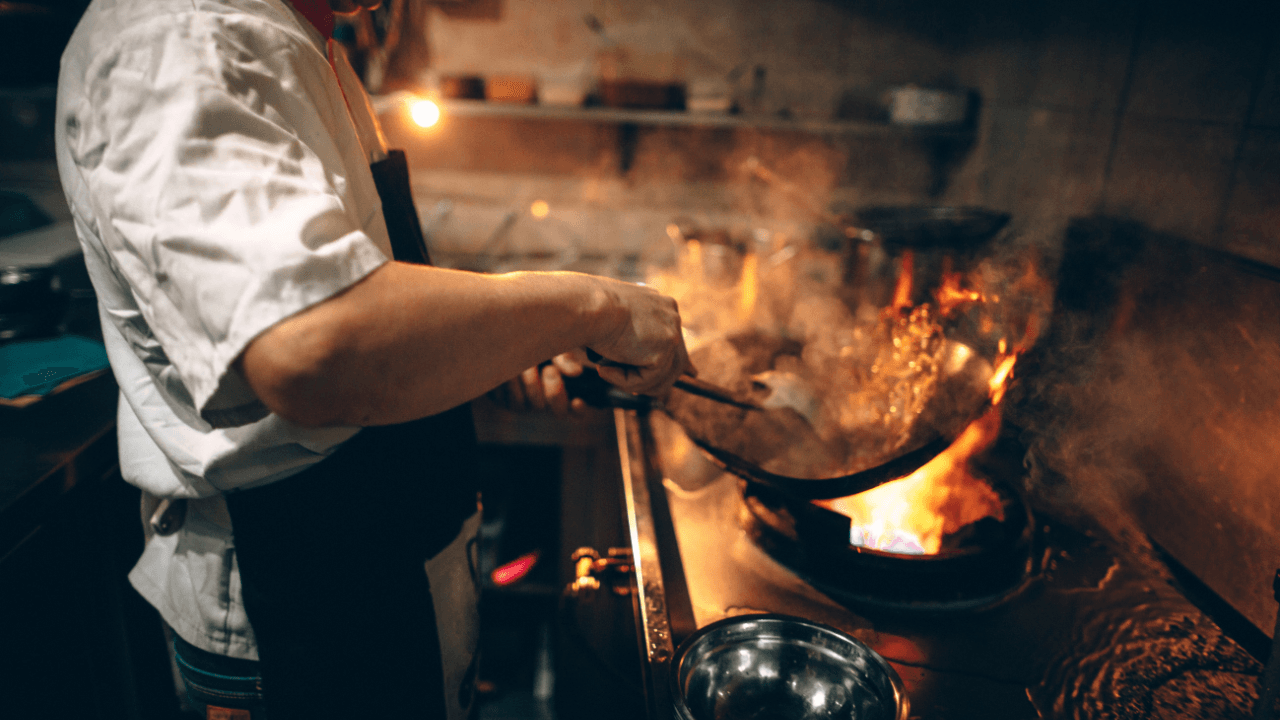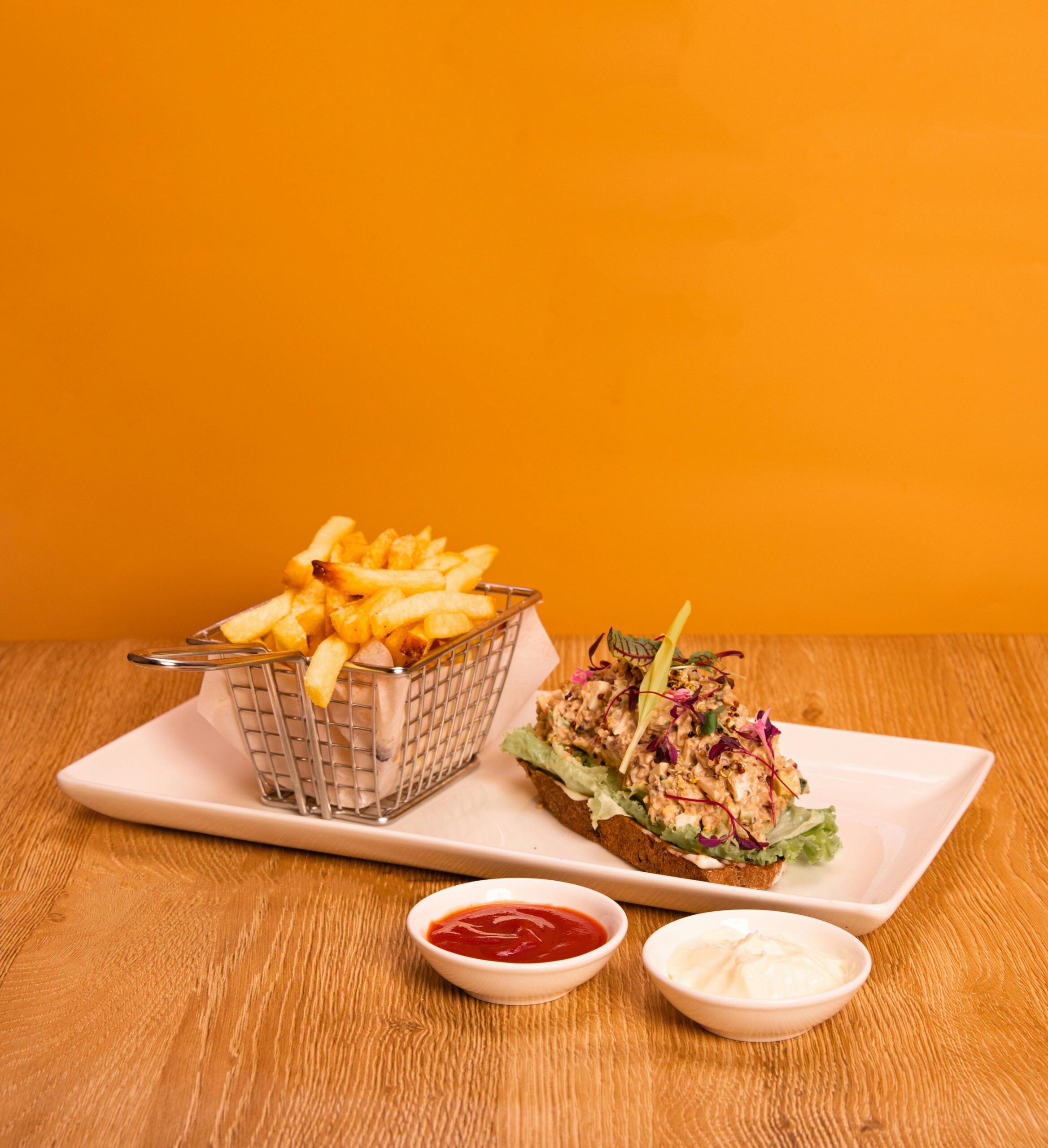- What Are the Factors that Determine a Restaurant’s Growth Potential?
- 5 Examples of Restaurant Success Stories
- Getting Ready to Grow Your Restaurant
Ever wondered how Mcdonald’s and Burger King became the giants they are today?
It wasn’t voodoo, hokum, or magic fairy dust that transformed the small stores into huge franchises. But a lot of setbacks, real estate purchases, and innovative menu ideas.
The road to success is paved only sometimes. A few times, it’s full of cobblestones, and other times it runs as smooth as silk.
And that shouldn’t deter an independent restaurant owner like yourself.
In this fascinating journey, we will unveil the tales of a few eateries that dared to dream big and ventured beyond their humble beginnings, reaching new heights with their expansion endeavors.
So, fasten your seatbelts and prepare your taste buds as we delve into the narratives of these expanding gastronomic marvels, leaving us all hungry for more!
What Are the Factors that Determine a Restaurant’s Growth Potential?
Around 30% of restaurants don’t make it after the first year. But others have faced the challenges head-on and made it to their fifth anniversary!
These restaurant owners are now striving to increase their margin of profits and reach new heights. So how can such visionaries accomplish this?
Many factors influence a restaurant’s growth potential, each crucial in determining its success and expansion prospects.
Here are some key factors that contribute to the growth potential of a restaurant business:
Location
The location of a restaurant is paramount. A strategically accessible location with high foot traffic, visibility, and proximity to target customers can significantly impact growth. A restaurant situated in a popular area or an emerging neighborhood can attract more customers and generate higher revenue.
Concept and Unique Selling Proposition (USP)
As a restaurant owner wanting to expand your existing restaurant business, having a well-defined concept and a strong Unique Selling Proposition (USP) can set you apart from competitors. A clear identity and unique offerings create brand loyalty and word-of-mouth marketing, driving customer retention and attracting new diners.
Quality of Food and Service
Exceptional food quality and excellent service are fundamental to a restaurant’s growth. Consistency in delivering a memorable dining experience encourages repeat visits and positive reviews, enhancing the restaurant’s reputation.
Customer Feedback and Reviews
Online reviews and customer feedback significantly impact a restaurant’s growth potential. Positive reviews can attract new customers, while constructive feedback helps identify improvement areas, enhancing the dining experience.
Effective Marketing and Branding
Smart marketing strategies and branding efforts can amplify a restaurant’s visibility and attract a more extensive customer base. Utilizing social media, promotions, and collaborations can boost brand recognition and support growth.
Operational Efficiency
Smooth and efficient restaurant operations are crucial for growth. Streamlined processes, inventory management, and cost control contribute to increased profitability, enabling investment in expansion.
Delivery App Integration
Adopting food delivery apps and having an online website can help increase revenues when considering expanding your borders.
You’ll also reap the following benefits:
Increased Visibility
Being listed on popular delivery apps and having an online presence increases your restaurant’s visibility in the digital realm. This exposure can attract new customers who may not have encountered your physical locations.
Convenience for Customers
Offering delivery and online ordering options allows customers to enjoy your food in the comfort of their homes or offices, making it more likely they’ll choose your restaurant over competitors.
Customer Retention and Loyalty
Many delivery apps offer loyalty programs and incentives to retain and encourage customers. By participating in such programs, you can encourage repeat orders and build long-term loyalty among your patrons.
Real-Time Data and Analytics
Delivery apps and online websites often provide valuable data and analytics. This information can help you understand customer preferences, peak ordering times, and popular menu items, empowering you to make data-driven decisions for your expanding restaurant.
Market Testing and Feedback
As you enter new markets during your restaurant expansion strategy, third party delivery services can serve as a testing ground. You can gauge customer response to your offerings in different regions and make adjustments based on feedback received.
Cost-Effectiveness
While setting up new physical locations requires significant investment, entering the digital space through delivery apps and online platforms can be a cost-effective way to expand your reach. It allows you to tap into new markets without the overhead costs of brick-and-mortar establishments.
Restaurant Brands Recognition
An online presence and participation in delivery apps contribute to your restaurant’s brand recognition. Consistent branding across digital channels reinforces your identity and helps build consumer trust.
Marketing and Promotional Opportunities
Delivery apps often offer restaurant marketing and promotional opportunities, such as featured listings or discounts. These can be leveraged to create buzz around your restaurant’s expansion and attract new customers.
Integration with POS Systems
Many delivery apps can integrate with your restaurant’s Point of Sale (POS) system, streamlining order management and ensuring a smooth process for both dine-in and delivery orders.
Adaptability to Market Trends
Successful restaurants stay attuned to market trends and consumer preferences. Flexibility and adaptability to changing tastes and dietary trends ensure continued relevance and a broader customer base.
Financial Stability and Capital
Adequate financial resources and stability are vital for growth initiatives. Whether opening new locations or renovating existing ones, having access to capital is essential for expansion.
Talent and Leadership
Competent and visionary leadership plays a pivotal role in a restaurant’s growth. A skilled management team that strategizes innovates, and motivates staff can drive expansion plans forward.
Loyalty Programs and Customer Engagement
Implementing loyalty programs and engaging with customers through personalized offers and experiences can increase customer retention and drive word-of-mouth referrals.
Competitive Analysis
Understanding the competition and identifying opportunities to differentiate from rivals are crucial for growth. A well-researched competitive analysis can inform strategic decisions and positioning.
Regulatory and Legal Considerations
Compliance with local regulations and legal requirements is necessary for smooth operations and growth. Understanding the legal landscape ensures that avoidable obstacles don’t hinder expansion efforts.
Your Inbox, Your Rules!
Tailor your newsletter with the topics you're most interested in.
5 Examples of Restaurant Success Stories
It’s always motivating to hear how a street hotdog stand grew into a hotdog empire in over ten years.
You can lounge back on a Sunday morning, grace your eyes on such examples, and think: “This can be me someday.”
And indeed, such a possibility, while it might seem out of reach sometimes, can become a reality if you play your cards right.
Now let’s take a look at a few examples of success stories from the US and other parts of the world:
Shake Shack started as a humble hot dog cart in New York City’s Madison Square Park in 2001. With its focus on high-quality ingredients and exceptional customer service, the small cart gained a loyal following. In 2004, it expanded into a permanent kiosk, and its popularity continued to soar.
Today, Shake Shack has grown into an international fast-casual burger chain with hundreds of locations worldwide, exemplifying how a simple concept can transform into a global phenomenon.
Founded in 2007, Sweetgreen is a fast-casual salad chain that emphasizes sustainability and healthy food choices. With a menu centered around fresh, locally-sourced ingredients and customizable salads, the brand quickly gained popularity among health-conscious consumers.
Leveraging its success and innovative approach, Sweetgreen expanded rapidly, reaching various cities across the United States and securing substantial investments to fuel further growth.
Originating in South Africa in 1987, Nando’s is a renowned restaurant chain famous for its flame-grilled peri-peri chicken. Nando’s unique and flavorful offerings and vibrant and quirky restaurant designs have garnered a devoted customer base. Through franchising and strategic expansion, Nando’s has grown into an international powerhouse, with restaurants in numerous countries across the globe.
P.F. Chang’s is an upscale Asian-themed restaurant that opened its first location in Arizona in 1993. P.F. Chang’s quickly became a hit by presenting a blend of traditional Chinese cuisine with modern American influences.
The restaurant’s success enabled it to expand into multiple locations domestically and internationally. Today, P.F. Chang’s is a prominent player in the casual dining segment with a strong global presence.
Dominique Ansel, a French pastry chef, gained worldwide fame for his creation of the Cronut (a cross between a croissant and a doughnut) in 2013. The Cronut craze attracted massive attention to his bakery in New York City.
On this success, Dominique Ansel expanded his bakery operations to multiple locations, including London, Los Angeles, and Tokyo. He continued innovating and introducing new pastries, maintaining a reputation as one of the most innovative and celebrated global pastry chefs.
Getting Ready to Grow Your Restaurant
Before deciding to expand your restaurant, ensure you go through the following checklist:
Evaluate Current Performance
Analyze your restaurant’s current performance, financials, and operational efficiency. Identify your strengths, weaknesses, opportunities, and threats. Understanding where you stand will provide a solid foundation for future decision-making.
Market Research
Conduct thorough market research to identify potential areas for expansion. Consider demographics, competition, and consumer preferences in the target locations. Determine if your concept will resonate with the new market.
Strengthen Brand Identity
A strong brand identity is crucial for successful expansion. Ensure that your restaurant’s branding, logo, and messaging are cohesive and convey the essence of your concept.
Refine Menu and Service
Review your menu and service offerings. Ensure they align with the preferences of the target market. Consistency and quality are key factors that will retain existing customers and attract new ones.
Secure Adequate Financing
Expanding a restaurant requires significant financial investment. Secure funding through a combination of personal savings, loans, investors, or partnerships. Prepare a detailed food business plan to present to potential investors or lenders.
Operational Scalability
Assess your restaurant’s operational scalability. Determine if your current systems, processes, and infrastructure can accommodate expansion without compromising quality.
Staffing and Training
Adequate staffing is vital for successful growth. Hire and train a competent team to maintain the same level of service and quality as your original location. Consistent training ensures uniformity across all outlets.
Select the Right Location
Choose your expansion locations strategically. Consider factors like foot traffic, visibility, accessibility, and proximity to your target customer base. Negotiate favorable lease terms for each new location.
Marketing and Promotion
Develop a robust marketing and promotional strategy for each new restaurant. Leverage digital marketing, social media, and local advertising to create awareness and excitement around your new openings.
Test and Iterate
Consider piloting your expansion plans with a pop-up or temporary location if possible. This allows you to test the market response before committing to a permanent establishment.
Operational Efficiency and Technology
Embrace technology to enhance operational efficiency. Invest in restaurant management software, POS systems, and inventory control to streamline processes across multiple locations.
Maintain Customer Focus
As you expand, never lose sight of your customers. Keep engaging with them through loyalty programs, feedback mechanisms, and personalized experiences.
Stay True to Your Vision
As you grow, stay true to the core values and vision that made your restaurant successful in the first place. Consistency in experience is essential for building a loyal customer base.
Get Inspired by Restaurant Success Stories and Start Your Journey
The restaurant industry is a melting pot of creativity, innovation, and culinary artistry, where success stories are born from the passion and dedication of visionary entrepreneurs.
From humble beginnings to global empires, these restaurants have proven that one can transform a culinary dream into a thriving reality with a clear vision, unwavering commitment, and a pinch of audacity.
Let these success stories be your guiding light if you contemplate embarking on your restaurant journey.
Remember that the key to enduring success lies in nurturing customer relationships and delivering impeccable experiences.



